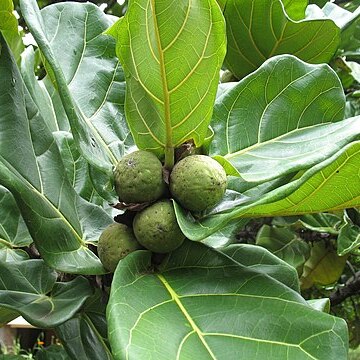Male flowers sessile; calyx campanulate or turbinate, truncate, dentate or irregularly or regularly lobed, the lobes imbricate; petals absent; disk absent; stamens (4)5(6), free, episepalous, anthers erect, subbasifixed, introrse, thecae parallel, longitudinally dehiscent; pistillode cylindric-obconic, infundibuliform, hypocrateriform, pileiform or sometimes lobed.
Inflorescences axillary, or borne on older wood, solitary or fasciculate, pedunculate, with a whorl of 5–12 involucrate imbricate tepaloid bracts surrounding the flowers; male inflorescences many-flowered, the flowers in dense globose capitula; female inflorescences 1-flowered.
Female flowers sessile; calyx minute, truncate, sinuate or lobed, disciform; petals absent; disk absent; ovary (2)3(5)-locular, with 2 ovules per loculus; styles (2)3(5), free, thick, recurved, covering the ovary, multipartite to laciniate.
Leaves alternate, usually crowded towards the end of the twigs, petiolate or subsessile, stipulate or not; blades simple, often obovate, entire, penninerved.
Fruit drupaceous, indehiscent; mesocarp spongy; pyrenes (2)3(4), dorsally carinate and bisulcate, indurate, tardily bivalved.
Seeds mostly 1 per pyrene, compressed, ecarunculate; endosperm fleshy; embryo straight; cotyledons broad, flat, green.
Twigs stout, often with pronounced leaf scars, producing an exudate when cut, which hardens and darkens on drying.
Indumentum simple and/or minutely pseudolepidote.
Trunks occasionally stilt-rooted.
Dioecious trees or shrubs.

